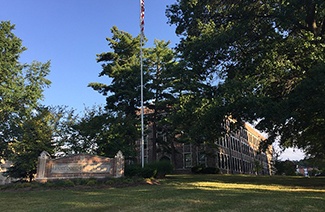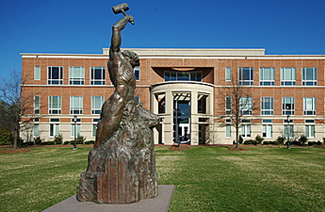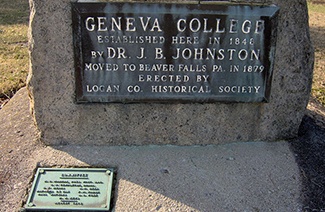大家在对GMAT阅读题目进行练习之后,要对文章进行整体的分析,从而归纳出一类文章的结构和解题技巧,这对考生在考试中获得高分有帮助。为了方便大家进行练习,小编为大家带来了
Increasingly, historians are blaming diseases imported
from the Old World for the staggering disparity between
the indigenous population of America in 1492—new esti-
mates of which soar as high as 100 million, or approxi-
(5) mately one-sixth of the human race at that time—and
the few million full-blooded Native Americans alive at
the end of the nineteenth century. There is no doubt that
chronic disease was an important factor in the precipi-
tous decline, and it is highly probable that the greatest
(10) killer was epidemic disease, especially as manifested in
virgin-soil epidemics.
Virgin-soil epidemics are those in which the popula-
tions at risk have had no previous contact with the
diseases that strike them and are therefore immunologi-
(15) cally almost defenseless. That virgin-soil epidemics were
important in American history is strongly indicated by
evidence that a number of dangerous maladies—small-
pox, measles, malaria, yellow fever, and undoubtedly
several more—were unknown in the pre-Columbian
(20) New World. The effects of their sudden introduction
are demonstrated in the early chronicles of America,
which contain reports of horrendous epidemics and steep
population declines, confirmed in many cases by recent
quantitative analyses of Spanish tribute records and
(25) other sources. The evidence provided by the documents
of British and French colonies is not as definitive
because the conquerors of those areas did not establish
permanent settlements and begin to keep continuous
records until the seventeenth century, by which time the
(30) worst epidemics had probably already taken place.
Furthermore, the British tended to drive the native
populations away, rather than enslaving them as the
Spaniards did, so that the epidemics of British America
occurred beyond the range of colonists’ direct
(35) observation.
Even so, the surviving records of North America do
contain references to deadly epidemics among the indige-
nous population. In 1616-1619 an epidemic, possibly of
bubonic or pneumonic plague, swept coastal New
(40) England, killing as many as nine out of ten. During the
1630’s smallpox, the disease most fatal to the Native
American people, eliminated half the population of the
Huron and Iroquois confederations. In the 1820’s fever
devastated the people of the Columbia River area,
(45) killing eight out of ten of them.
Unfortunately, the documentation of these and other
epidemics is slight and frequently unreliable, and it is
ecessary to supplement what little we do know with
evidence from recent epidemics among Native Ameri-
(50) cans. For example, in 1952 an outbreak of measles
among the Native American inhabitants of Ungava Bay.
Quebec, affected 99 percent of the population and killed
7 percent, even though some had the benefit of modern
medicine. Cases such as this demonstrate that even
(55) diseases that are not normally fatal can have devastating
consequences when they strike an immunologically
defenseless community.
1. The primary purpose of the passage is to
(A) refute a common misconception
(B) provide support for a hypothesis
(C) analyze an argument
(D) suggest a solution to a dilemma
(E) reconcile opposing viewpoints
2. According to the passage, virgin-soil epidemics can be
distinguished from other catastrophic outbreaks of
disease in that virgin-soil epidemics
(A) recur more frequently than other chronic diseases
(B) affect a minimum of one-half of a given population
(C) involve populations with no prior exposure to a
disease
(D) usually involve a number of interacting diseases
(E) are less responsive to medical treatment than are
other diseases
3. According to the passage, the British colonists
wereunlike the Spanish colonists in that the British
colonists
(A) collected tribute from the native population
(B) kept records from a very early date
(C) drove Native Americans off the land
(D) were unable to provide medical care against
epidemic disease
(E) enslaved the native populations in America
4. Which of the following can be inferred from the passage
concerning Spanish tribute records?
(A) They mention only epidemics of smallpox.
(B) They were instituted in 1492.
(C) They were being kept prior to the seventeenth
century.
(D) They provide quantitative and qualitative evidence
about Native American populations.
(E) They prove that certain diseases were unknown in
the pre-Columbian New World.
5. The author implies which of the following about
measles?
(A) It is not usually a fatal disease.
(B) It ceased to be a problem by the seventeenth century.
(C) It is the disease most commonly involved in virgin-
soil epidemics.
(D) It was not a significant problem in Spanish colonies.
(E) It affects only those who are immunologically
defenseless against it.
6. Which of the following can be inferred from the passage
about the Native American inhabitants of Ungava Bay?
(A) They were almost all killed by the 1952 epidemic.
(B) They were immunologically defenseless against
measles.
(C) They were the last native people to be struck by a
virgin- soil epidemic.
(D) They did not come into frequent contact with white
Americans until the twentieth century.
(E) They had been inoculated against measles.
7. The author mentions the 1952 measles outbreak most
probably in order to
(A) demonstrate the impact of modern medicine on
epidemic disease
(B) corroborate the documentary evidence of epidemic
disease in colonial America
(C) refute allegations of unreliability made against the
historical record of colonial America
(D) advocate new research into the continuing problem
of epidemic disease
(E) challenge assumptions about how the statistical
evidence of epidemics should be interpreted
8. Which of the following, if newly discovered, would
most seriously weaken the author’s argument
concerning the importance of virgin-soil epidemics in
the depopulation of Native Americans?
(A) Evidence setting the pre-Columbian population of
the New World at only 80 million
(B) Spanish tribute records showing periodic population
fluctuations
(C) Documents detailing sophisticated Native American
medical procedures
(D) Fossils indicating Native American cortact with
smallpox prior to 1492
(E) Remains of French settlements dating back to the
sixteenth century

















